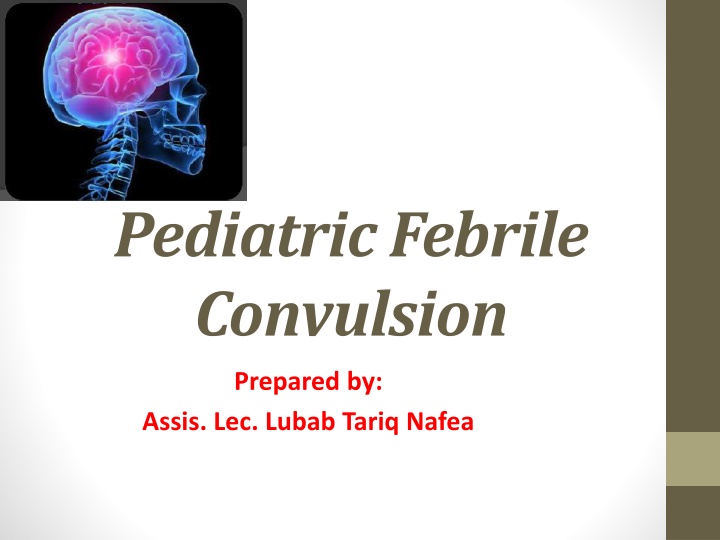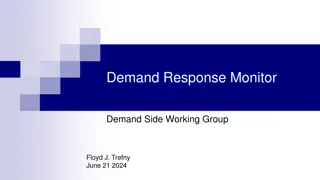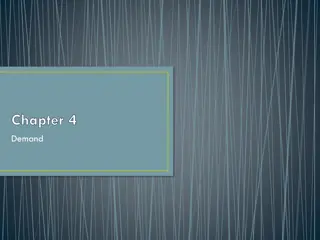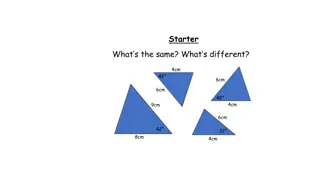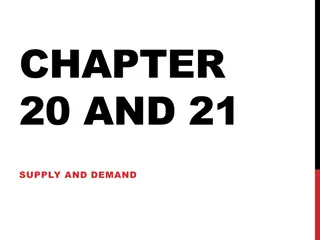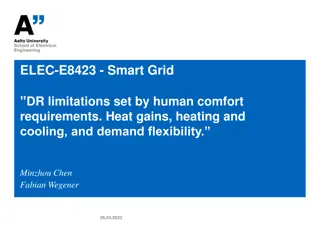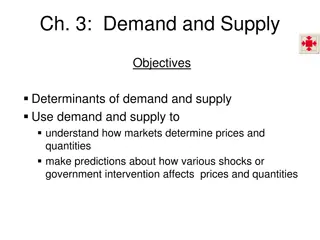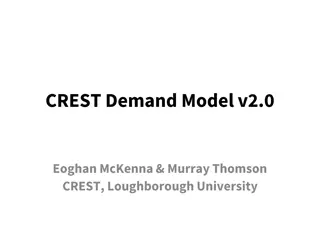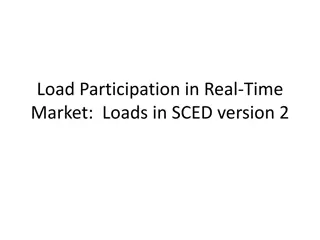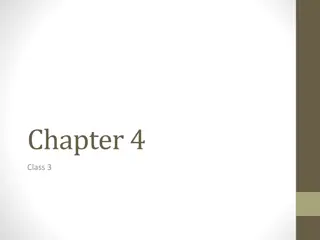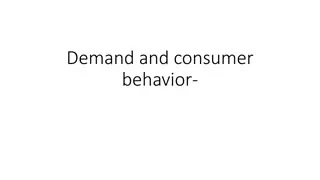LMP-G Policy Issues Discussion Demand Side Working Group
Discussing TAC motion on LMP-G implementation, ensuring fair incentives for customers, complexities of LMP-G, and authority on billing for unused energy.
Download Presentation

Please find below an Image/Link to download the presentation.
The content on the website is provided AS IS for your information and personal use only. It may not be sold, licensed, or shared on other websites without obtaining consent from the author.If you encounter any issues during the download, it is possible that the publisher has removed the file from their server.
You are allowed to download the files provided on this website for personal or commercial use, subject to the condition that they are used lawfully. All files are the property of their respective owners.
The content on the website is provided AS IS for your information and personal use only. It may not be sold, licensed, or shared on other websites without obtaining consent from the author.
E N D
Presentation Transcript
Pediatric Febrile Convulsion Prepared by: Assis. Lec. Lubab Tariq Nafea
Contents What is a seizure? Seizure types Etiology of seizures Febrile convulsions Epilepsies of childhood Epilepsy syndromes Status epilepticus
What is a Seizure ? Paroxysmal, involuntary & sudden disturbance of neurological function caused by an abnormal or excessive neuronal discharge. With or without LOC. If manifests as motor act convulsions
Aetiology of seizures Causes for Epileptic seizures: Idiopathic (70-80%) cause unknown but presumed genetic Secondary Cerebral malformations Cerebral vascular occlusion Cerebral damage (ex; congenital infections, hypoxic-Cerebral tumour Neurodegenerative disorders Neurocutaneous syndromes Neurofibromatosis
Causes for Non-epileptic seizures Febrile seizures Metabolic Hypoglycaemia Hypocalcaemia Hypomagnesaemia Hypo/hyper natraemia Head trauma Meningitis/Encephalitis Poisons/Toxins
Definition A seizure accompanied by a fever in the absence of intracranial infection due to bacterial meningitis or viral encephalitis.
Incidence Affects 3% of children Positive family Hx in 10%-20% Autosomal dominant inheritance (thus family hx important) Recurrent febrile seizures in 30%-40% 1%-2% of subsequent epilepsy after a simple febrile seizure 4%-12% in complex febrile seizure Boys > Girls
Diagnostic criteria Age 6 months 60 months (5yrs) Peak 14 24 months Temperature Usually >= 38C with rapidly rising temp., within 24hrs of onset of fever Duration Should not last >10min Generalized, not focal Characteristics No residual weakness of limb or disability except a brief period of drowsiness. No evidence of CNS infections. (meningitis, encephalitis, abscess .) , otitis media ) No Hx of previous afebrile seizure No acute systemic infection ,but extra cranial infection may be there ( URTI). No acute systemic metabolic abnormality
Classification SIMPLE complex Most common Uncommon Lasts less than 15min Lasts more than 15min One fit only in the same illness Recurring during same illness within 24hrs Generalized tonic-clonic Focal
Risk factors for recurrent febrile seizures Younger than 18 months (younger the child, higher the risk...) Shorter duration of fever before the seizure Height of fever (lower the peak, higher the risk ) Positive family Hx Complex febrile seizure at onset
Pathogenesis: Not well known Due to temporary impairment of the balance between convulsion and anticonvulsant system of brain. Studies done in children suggest that the cytokine network is activated and may have a role in the pathogenesis of febrile seizures. Threshold level of anticonvulsant system in these genetically predisposed children is Lower . Endogenous pyrogens such as IL-1 increase neuronal excitability & cause seizures. Hyperthermia induced alkalosis.
Investigations Usually not needed in simple febrile convulsion. Complex form may need. Blood glucose, serum electrolytes. LP and CSF analysis Neuro-imaging (CT, MRI) EEG Lumbar puncture is strongly recommended in:- 1. Hx of irritability, reduced feeding or lethargy 2. Clinical signs of meningitis/encephalitis 3. Systemically ill 4. Prolonged post-ictal altered consciousness 5. After a complex convulsion 6. After pre-treatment with antibiotics
Neuroimaging is considered If: Micro/ macrocephaly Neuro-cutaneous syndrome Pre-existing neurological defect Recurrent complex febrile seizures
Management Fever(Treating fever promote comfort). Find the cause (usually viral illness) Must exclude meningitis Infection screen blood culture urine culture LP for CSF culture Not important in preventing seizures. Physical methods Fanning Tepid sponging (now not recommended) Light clothing Drugs PCM ibuprofen
Management at home Move danger away Left lateral position Do not try to stop fitting Do not put anything in mouth Loosen clothing Wipe secretions from mouth No fluids or drugs orally Note the time Do not panic If seizure lasting >5-10 min: Seek medical advice Diazepam 0.5mg/kg rectal Midazolam 0.5mg/kg buccal
Prognosis: Generally excellent Risk of further febrile seizures 30% Risk of epilepsy after single febrile seizure 3% No increased risk of death Information for parents: FC are common Recurrences likely Brain damage Later epilepsy No evidence of deaths What to do when fitting If lasting >10 min & not stopping Rectal diazepam -OR- Take to the hospital Information & advice sheets
